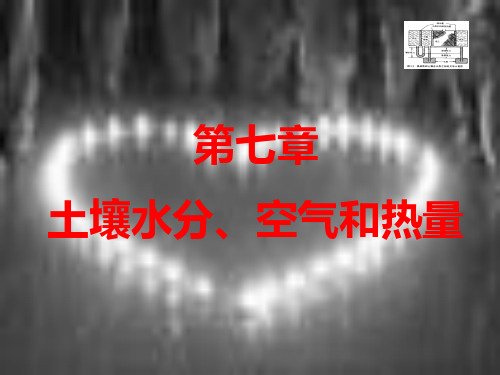- 1、下载文档前请自行甄别文档内容的完整性,平台不提供额外的编辑、内容补充、找答案等附加服务。
- 2、"仅部分预览"的文档,不可在线预览部分如存在完整性等问题,可反馈申请退款(可完整预览的文档不适用该条件!)。
- 3、如文档侵犯您的权益,请联系客服反馈,我们会尽快为您处理(人工客服工作时间:9:00-18:30)。
Abstract A better understanding of nitric oxide (NO) emission from a typical rice-wheat agroecosystem in eastern China is important for calculating the regional inventory and to propose effective NO mitigation options. Nitric oxide flux measurements by static chamber method were made from treatments of conventional nitrogen-fertilizer (NPK plus urea) application, no-nitrogen application, and nitrogenfertilizer with incorporation of wheat straw residue for an entire rotation period (June 2002 to June 2003). During the wheat growing season two further treatments of fertilizer without crops planted and bare soil without nitrogen (N) fertilization were applied. Total annual NO emissions for the conventional fertilizer, no N fertilizer and fertilizer plus straw application were 0.44±0.01, 0.22±0.01, and 0.57±
Plant Soil
combustion, biomass burning, lightning, and soil biogenic emissions. Global estimates for the source strength of NOx (nitric oxide (NO) + nitrogen dioxide (NO2)) ranged from 42 to 47 Tg N y−1 in 2000, of which soils contributed 6.5 to 9.6 Tg N y−1 (Denman et al. 2007) via the microbial processes nitrification and denitrification. Agricultural soils, where nitrogen (N) fertilizers are considered the dominant sources of NO emissions, may account for up to 18% of the soil sources in the global NO budget (Bouwman et al. 2002b). The global mean fertilizer-induced emissions for NO amount to 0.7% of the N applied (Bouwman et al. 2002b). To produce enough food to feed its large population, China consumed 32.4 million tons of synthetic N fertilizer in 2007, constituting about one third of the global total (FAO 2009). Most agricultural areas in China are heavily fertilized. For example, the annual application rate of synthetic N for conventional agricultural practices in eastern and southeastern China as well as the North China Plain now ranges from 550 to 600 kg N ha−1 for typical doublecropping systems (Ju et al. 2009). Excessive N fertilization in intensive agricultural areas of China has resulted in serious environmental problems, such as NO enrichment of the atmosphere. Wang et al. (2005) roughly estimated the annual NO emission from soils in China at about 657 Gg N in 1999, about 11.7% of the global total from soils in 2000 (Ehhalt et al. 2001), and about 12.5% of the anthropogenic origins in China. Yan et al. (2003a) estimated the average annual NO emissions from croplands in China at 242.8 Gg N for 1995. However, soil NO emissions remain inadequately quantified in China. Previous studies from cereal crop (e.g., Zheng et al. 2003a; Zheng et al. 2003b; Zhou et al. 2007) and vegetable (Fang and Mu 2006, 2007, 2009; Li and Wang 2008; Mei et al. 2009) showed large differences in NO emissions from soils across China due to different climates, soils, crop and fertilizer types, and soil temperatures. In reported studies, the direct NO-N emission factors (EFds, which are defined as the loss rates of nitrogen fertilizer via NO-N emission in the current year or season) ranged from 0.003 to 11%, but a consistent explanation for this wide divergence is lacking (Skiba et al. 1997; Ludwig et al. 2001; Mei et al. 2009; Stehfest and Bouwman 2006). Matson (1997) suggested that information on the NOx response to agricultural management was a major
Responsible Editor: Ute Skiba. Z. Zhou : X. Zheng (*) : B. Xie : C. Liu : T. Song : S. Han State Key Laboratory of Atmospheric Boundary Layer Physics and Atmospheric Chemistry, Institute of Atmospheric Physics, Chinese Academy of Sciences, Beijing 100029, People’s Republic of China e-mail: xunhua.zheng@ J. Zhu State Key Laboratory of Soil and Sustainable Agriculture, Institute of Soil Science, Chinese Academy of Sciences, Nanjing 210008, People’s Republic of China
Zaixing Zhou & Xunhua Zheng & Baohua Xie & Chunyan Liu & Tao Song & Shenghui Han & Jianguo Zhu
Received: 22 September 2009 / Accepted: 25 May 2010 # Springer Science+Business Media B.V. 2010
Plant Soil DOI 10.1007/s11104-010-0450-y
REGULAR ARTICLE
Nitric oxide emissions from rice-wheat rotation fields in eastern China: effect of fertilization, soil water content, and crop residue
Introduction Nitric oxide (NO) is an important atmospheric pollutant involved in tropospheric photochemistry such as O3 production and the formation of nitrate aerosol particles (Jenkin and Clemitshaw 2000). The main sources of NO in the troposphere are fossil fuel





